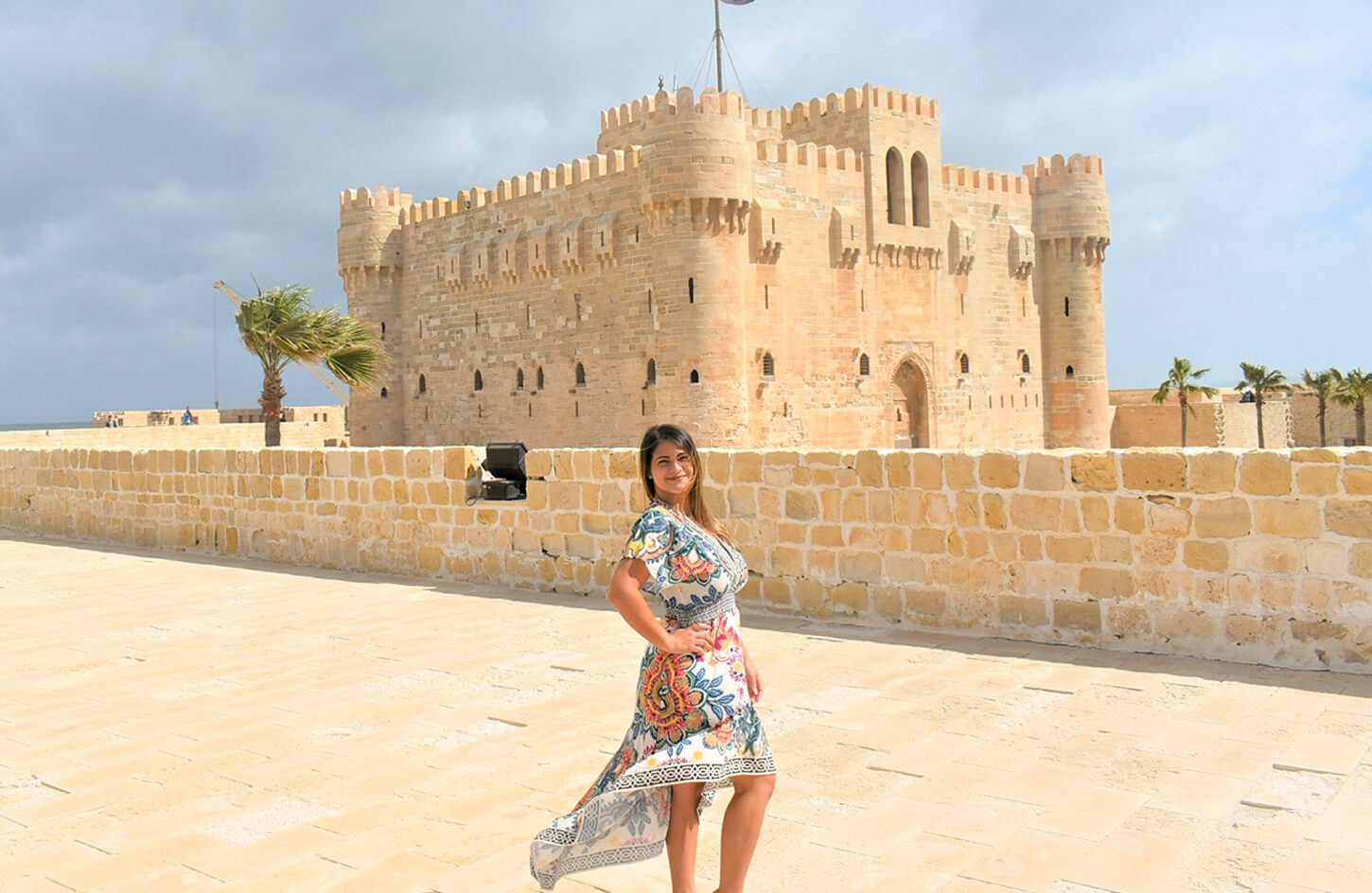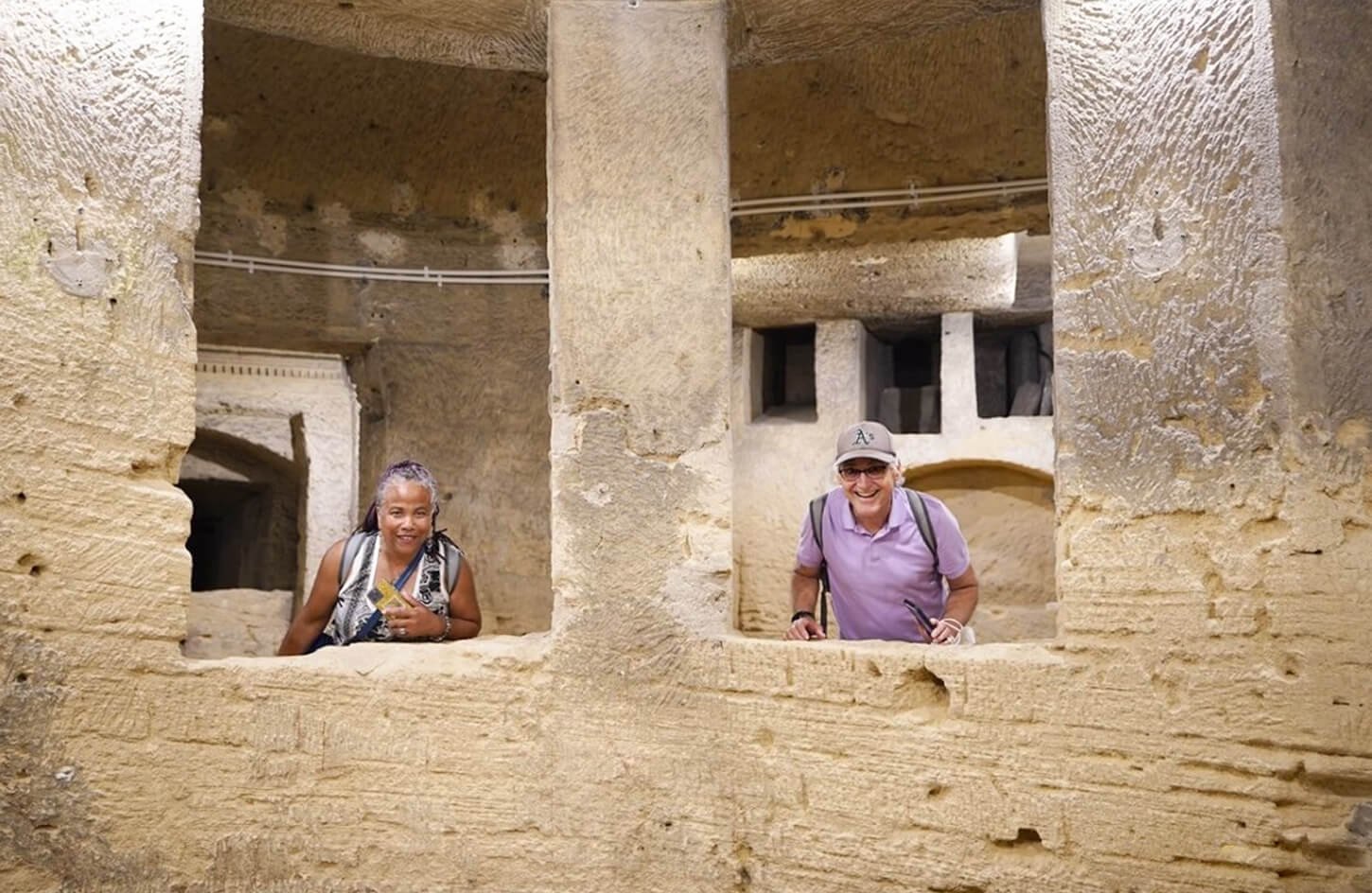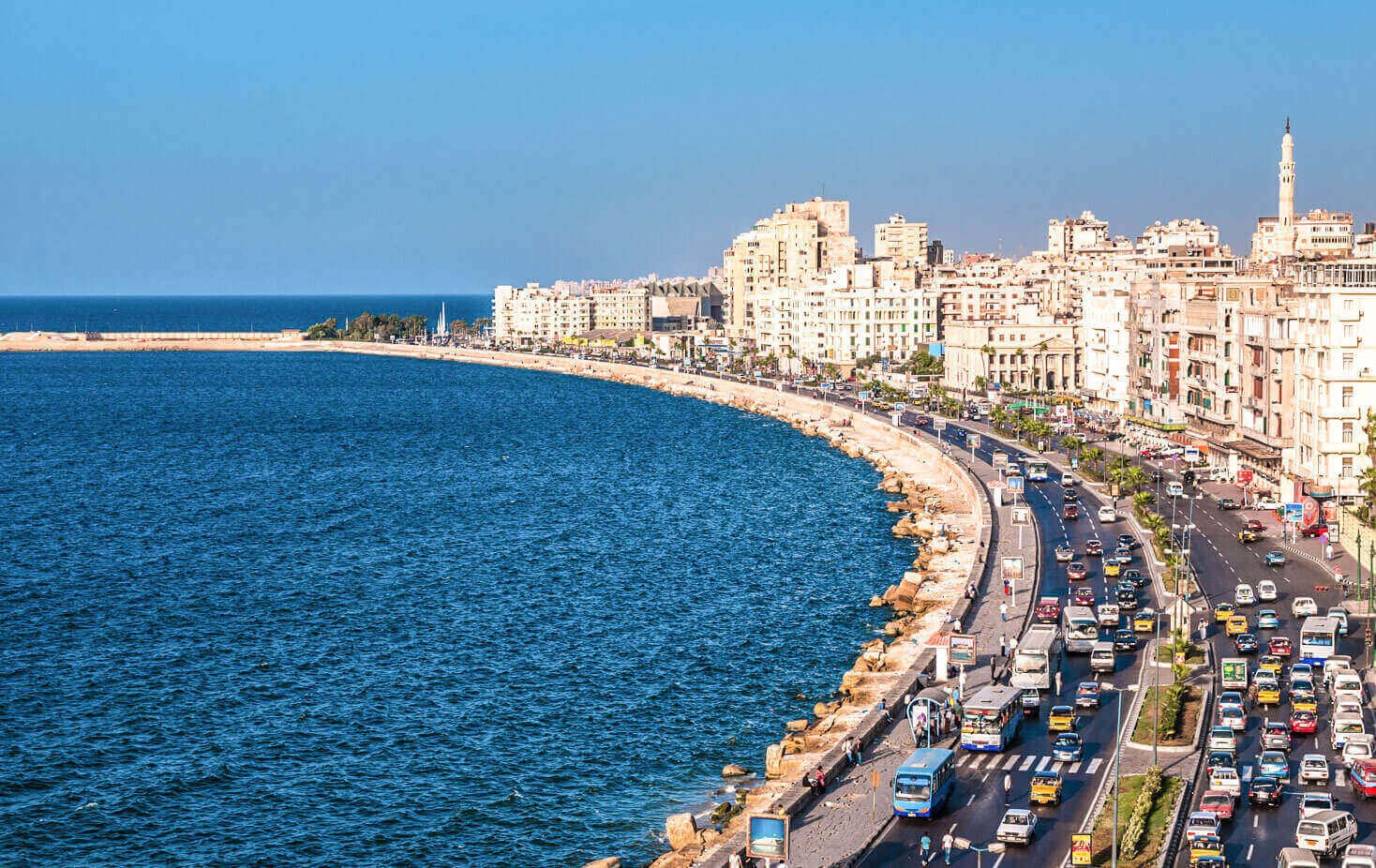Imagine walking through a city that has been a beacon of culture and history for millennia. Founded by Alexander the Great in 331 BC, this Mediterranean coastal city is a treasure trove of ancient wonders and modern charm.
As you explore this vibrant city, you’ll uncover a rich history that spans centuries. From its storied past to its contemporary attractions, there’s much to discover. You’ll be drawn to its historic landmarks and cultural heritage, making it an unforgettable destination.
Whether you’re a history buff or simply looking for a unique travel experience, this city’s blend of ancient and modern attractions is sure to captivate. Get ready to immerse yourself in the fascinating story of a city that has been a crossroads of civilizations for centuries.
The Ancient Pearl of the Mediterranean
Alexandria sits on the Mediterranean coast, with a history that goes back thousands of years. It was founded by Alexander the Great in 331 BC. Quickly, it became a center of culture and learning in the ancient world.
Alexandria’s Founding by Alexander the Great
Alexander wanted Alexandria to connect the Greek world with Egypt’s wealth. Alexander the Great’s founding of Alexandria started a new era. The city became a key place for Hellenic culture.
The city’s location helped with trade and cultural sharing. This set the stage for its future success.
The city’s architecture and culture still show Alexander’s impact. It’s a lasting sign of his vision.
From Ancient Glory to Modern Charm
Over time, Alexandria changed from an ancient city to a modern one. It keeps its history alive while being modern. Visitors can see ancient ruins and new buildings.
The city’s Mediterranean setting shapes its culture and food. It makes Alexandria a special and interesting place to visit.
Planning Your Trip to Alexandria, Egypt
Alexandria is waiting for you with its ancient treasures and Mediterranean charm. But first, you must plan your trip. To make your journey memorable and stress-free, know the best times to visit. Also, understand your transportation options and visa requirements.
Best Time to Visit Alexandria
The spring (March to May) and autumn (September to November) are the best times to visit. The weather is mild and pleasant. This makes it perfect for exploring the city’s historical sites and enjoying the coast. Avoid the peak summer months if you don’t like the heat, as it can be very hot.
How to Get to Alexandria
Alexandria is easy to reach by different transportation options. These options suit various preferences and budgets. Here are some ways to get there:
- By Air: The easiest way is flying into Borg El Arab Airport. It’s about 45 kilometers from the city center. You can take a taxi or bus from there.
- By Train or Bus from Cairo: For a budget-friendly option, take a train or bus from Cairo. The trip takes 3-4 hours, depending on traffic and your choice of transport.
- By Cruise Ship: Alexandria is a great stop for Mediterranean cruises. You can get off and explore the city’s attractions. Enjoy the local culture and history.
Visa Requirements for American Travelers
As an American traveler, you need a visa to enter Egypt. The easiest option is the e-visa, which you can apply for online before your trip. Make sure your passport is valid for at least six months after your planned departure. Be ready to provide necessary documents and pay the fee.

How to Explore Alexandria’s Historical Treasures
Walking through Alexandria’s old streets, you’ll find many historical treasures. The city mixes its ancient past with today’s charm. It’s great for both history lovers and casual visitors.
The city’s attractions show its lasting legacy. You’ll see everything from big libraries to hidden catacombs. Each place gives a special look into Alexandria’s history.
Visiting the Bibliotheca Alexandrina
The Bibliotheca Alexandrina honors the old Library of Alexandria. It’s a place of learning and culture. This library and museum is also a beautiful building.
Guided Tour Options
Guided tours at the Bibliotheca Alexandrina are available. They talk about the library’s history and architecture. Tours are in many languages, welcoming all visitors.
Must-See Collections
The library has many collections, like rare books and artifacts. Don’t miss the exhibitions on Alexandria’s culture.
The Catacombs of Kom El Shoqafa are a must-see. They’re a network of tombs from the Ptolemaic period. It’s a peek into Alexandria’s ancient burial practices.
Walking through, you’ll see amazing carvings and statues. The site shows Alexandria’s cultural and historical importance.
Exploring Pompey’s Pillar and the Serapeum
Pompey’s Pillar is a famous landmark. The Serapeum, a temple for Serapis, is nearby. These sites show Alexandria’s ancient religious life.
Visiting these places, you’ll learn more about Alexandria’s history. You’ll see Egyptian, Greek, and Roman influences in the architecture and artifacts.
Discovering the Roman Amphitheater and Villa of the Birds
The Roman Amphitheater shows Alexandria’s Roman era. The Villa of the Birds is known for its mosaics. Both are key sites for history fans.
Seeing these sites, you’ll understand Alexandria’s rich culture. Whether you love history or just want to see a new city, Alexandria’s treasures will amaze and inspire you.
Experiencing Alexandria’s Coastal Beauty
Explore Alexandria’s stunning coastlines and historic sites. Walk along the waterfront to see the Mediterranean Sea and learn about its past.
Walking Guide to the Corniche
The Corniche is a beautiful waterfront with views of the Mediterranean. It’s great for walking, jogging, or biking. You’ll feel the sea breeze and hear the waves.
The Corniche is perfect for a leisurely walk, jog, or bike ride. Start at the Bibliotheca Alexandrina and walk north. Enjoy the city’s sights and sounds.
How to Visit the Citadel of Qaitbay
The Citadel of Qaitbay is a 15th-century fortress on the eastern harbor. This historic site offers panoramic views of the Mediterranean Sea. It’s a must-see for history lovers.
To get there, take a taxi or ride-share from the city center. Check the opening hours and ticket prices before you go.
Tips for Exploring Montazah Palace and Gardens
Montazah Palace and Gardens show off Alexandria’s beauty. The palace was a royal retreat in the early 20th century. Its gardens are full of greenery and sea views.
To make the most of your visit, consider hiring a guide. They can tell you about the palace’s history. Wear comfy shoes and bring water to explore fully.
Follow these tips to see the best of Alexandria’s coast. Enjoy its beautiful waterfronts and historic sites.
Immersing Yourself in Alexandrian Culture
As you explore Alexandria, you’ll find a city full of life and history. Its culture is a mix of Egyptian, Greek, and Mediterranean styles. This makes it a special place for visitors.
Local markets and bazaars are great ways to see Alexandrian culture. These places show daily life and let you buy local crafts and souvenirs.
Exploring local markets in Alexandria is fun and rewarding. Remember to bargain, as it’s common here.
Bargaining Tips
- Be respectful and friendly when talking to vendors.
- Know the market value of items you want to buy.
- Don’t hesitate to leave if the price isn’t good.
What to Buy
Alexandria’s markets have many things to buy, like handicrafts, spices, and jewelry. Look for items that show the city’s culture, such as detailed pottery or traditional clothes.
Guide to Appreciating Alexandrian Architecture
Alexandria’s buildings show its rich history and diverse cultures. Walk along the Corniche to see historic landmarks and modern architecture.
The city’s buildings range from ancient Roman and Greek to modern styles. This shows how the city has changed over time.
Understanding the Cosmopolitan Heritage
Alexandria’s mix of cultures comes from its location and history. It has been a place where many cultures meet and mix.
Knowing this heritage helps you enjoy the city’s culture more. It’s seen in its food, architecture, and more.
How to Enjoy Authentic Alexandrian Cuisine
As you explore Alexandria, you’ll smell fresh seafood and spices. This smell leads you to the city’s best food spots. Alexandrian food mixes Mediterranean tastes with the city’s history and culture. Try local seafood, Egyptian dishes, and visit top restaurants and cafés to taste the real flavors.
Must-Try Seafood Dishes
Alexandria is a seafood lover’s dream. You must try grilled fish with garlic and coriander. Also, don’t miss the seafood stew, a tasty mix of fresh seafood. Here are some seafood dishes you should try:
- Grilled calamari, often served with a squeeze of lemon
- Seafood kofta, made with a mix of fish, shrimp, and spices
- Fried fish, typically served with a side of tartar sauce
Traditional Egyptian Delicacies
Alexandria is also famous for Egyptian dishes. You should try koshari, a vegetarian dish with pasta, lentils, and tomato sauce. Another favorite is shawarma, a tasty sandwich with grilled meat. Don’t forget to try these Egyptian treats:
- Ful medames, a hearty fava bean stew
- Ta’ameya, Egyptian falafel made with fava beans
Best Restaurants and Cafés in Alexandria
To taste Alexandria’s true flavors, visit its best eateries. Here are some top places:
- Fortuna Restaurant, known for its seafood dishes and waterfront views
- San Stefano Grand Plaza, a popular spot for traditional Egyptian cuisine
- Alexandria’s local cafés, where you can enjoy a cup of coffee or tea and people-watch
Where to Stay in Alexandria
Alexandria has many places to stay, from fancy hotels to cozy guesthouses. You can pick where to stay based on what you like. Do you want to be near history, by the sea, or in the city center?
Luxury Accommodations Along the Corniche
Looking for luxury? Hotels along the Corniche have amazing views of the Mediterranean Sea. They offer great amenities like fancy restaurants, spas, and gyms. Staying in a luxury hotel along the Corniche means you’re close to beautiful beaches and historic sites.
- Four Seasons Hotel Alexandria
- Sofitel Alexandria Cecil
- San Stefano Grand Plaza
Mid-Range Hotels in Downtown Alexandria
For a moderate budget, downtown Alexandria has many mid-range hotels. They are close to attractions and offer comfy stays at good prices. You can enjoy the city’s lively vibe and get around easily.
- Hotel Salamlek Palace
- Metropole Hotel
Budget-Friendly Options for Travelers
Travelers on a tight budget can find cheap places to stay in Alexandria. Hostels and guesthouses are perfect for saving money. You can still enjoy the city’s beauty without spending a lot. Budget-friendly options are near main sights, making it easy to see Alexandria.
- Alexandria Hostel
- Green House Hotel

Day Trips from Alexandria
Looking to explore beyond Alexandria? There are many day trips to consider. The city’s location is perfect for visiting nearby areas. You can see historical sites, desert oases, and Mediterranean towns.
Visiting El Alamein and WWII Sites
El Alamein is a key spot for day trips from Alexandria. It was a major site in World War II. At the El Alamein War Museum, you can learn about its history.
The area has war cemeteries and memorials. You can visit the Commonwealth War Cemetery and the German War Cemetery. A guided tour or a 2-hour drive from Alexandria is a good way to get there.
Book your Alamein tour from Alexandria today and explore iconic WWII sites!
Exploring the Desert Oases
For a unique trip, check out the desert oases. Siwa Oasis is a great choice, though it’s a longer trip. Or, visit Wahat Al-Ghaba (Forest Oasis) for a closer experience.
These oases are peaceful, with lush palms and springs. You can go on desert safaris, bird watching, or just relax.
Join a 2-day adventure to Siwa Oasis from Alexandria—nature, culture, and history await!
Planning Quick Trips to Nearby Mediterranean Towns
The Mediterranean coast near Alexandria has lovely towns for day trips. Maadi and Abu Qir are known for their beaches and seafood. Rosetta (Rashid) is famous for its history and Egyptian architecture.
These towns are great for a relaxing day. You can try local food and see historical sites.
Exploring Alexandria’s historic streets can be amazing. Knowing how to navigate like a local makes your trip better. The city’s rich history and diverse cultures make it interesting. To enjoy your visit, learn about local transport, Arabic phrases, and cultural norms.
Transportation Options Within the City
Alexandria’s public transport is easy to use. You can travel by taxi, ride-sharing, or bus.
Using Taxis and Ride-Sharing Services
Taxis are easy to find and book. Ride-sharing is also cheap and convenient.
Public Transportation Tips
Try the public bus for a local feel. Buses cover the city well and are cheap.
Language Tips for American Travelers
Many people in Alexandria speak English. But, learning Arabic phrases helps a lot. Saying “Marhaba” (hello) and “Shukraan” (thank you) is nice.
Safety and Cultural Etiquette
Alexandria is safe, but be careful. Dress modestly at mosques and respect local customs.
Conclusion: The Timeless Allure of Alexandria
Exploring Alexandria, Egypt, reveals a city that mixes old history with new charm. Its rich culture shines, from the grand Bibliotheca Alexandrina to the ancient Catacombs of Kom El Shoqafa.
Walking along the Corniche, visiting the Citadel of Qaitbay, or seeing the Montazah Palace and Gardens shows the city’s culture. Whether you love history, culture, or the sea, Alexandria has it all.
The city’s culture is seen in its buildings, food, and markets. Getting to know the local culture shows why Alexandria is a top spot for travelers. With its mix of old and new, Alexandria Egypt is full of experiences waiting for you.


[…] Christian communities are largely found in urban regions of Alexandria and Cairo and are members of the Greek Orthodox Church of Alexandria. The Melkite Greek Catholic […]
[…] waves of Jewish immigrants settled in Egypt during the Ptolemaic era, especially around Alexandria. Jews served in the administration as custodians of the river. An inscription recording a Jewish […]
[…] Alexandria is Egypt’s second-largest city and window on the Mediterranean, with several historical sights and the stunning new Bibliotheca Alexandrina. It is the country’s main summer attraction for Egyptians escaping the summer heat and looking for a place to spend their summer vacation. The tourist attractions include Roman and Greek monuments, Catacombs of Kom El-Shoqafa, Bibliotheca Alexandria, Qaitbay’s Castle, and Qasr Al Montazah (Al Montazah Palace). […]